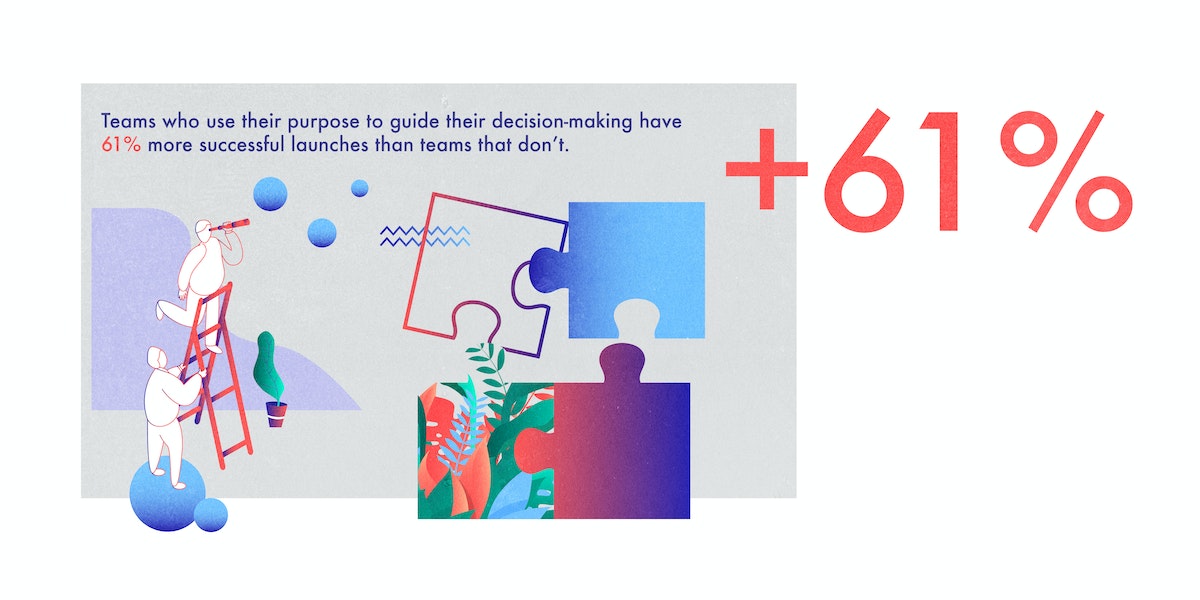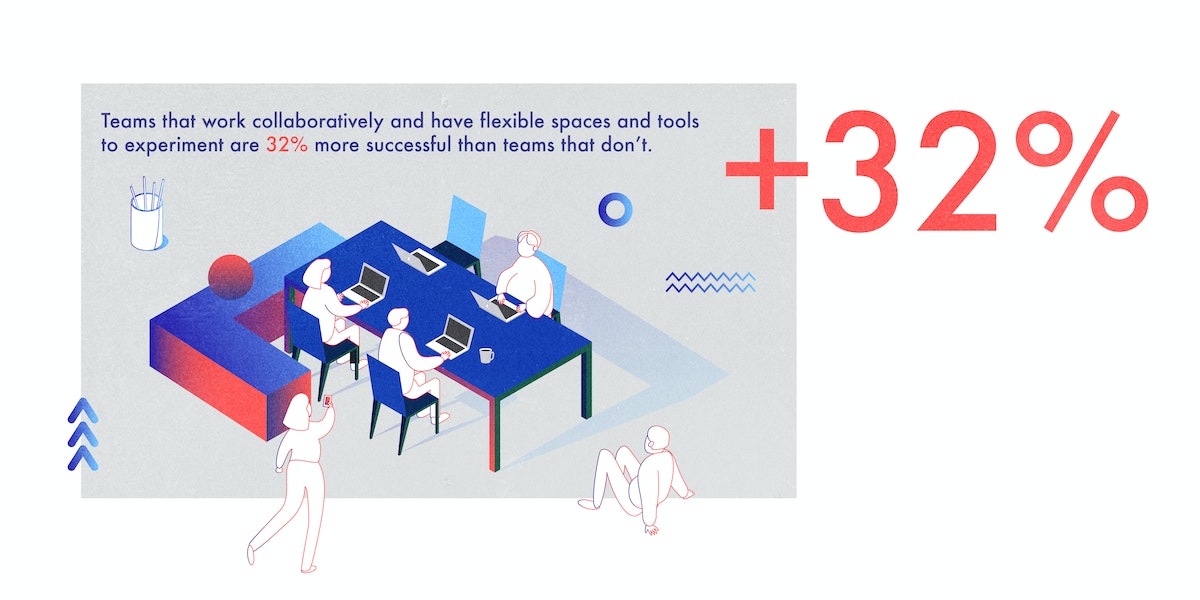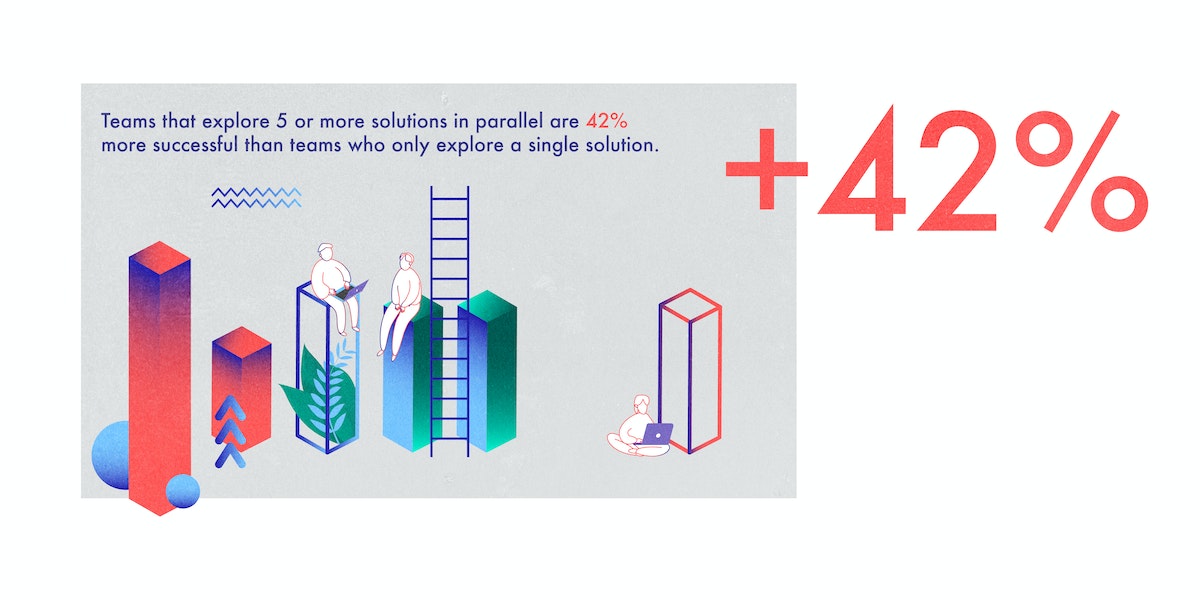Innovation Thrives Under These 5 Evidence-Backed Conditions

Executing innovative ideas requires creativity. And creativity thrives in a work environment that fits the dynamic needs of modern teams, from hyper-collaboration to heads-down time. As today’s organizations strive to become more innovative and resilient, they must adapt their spaces and modes of working to promote creative problem-solving across teams.
Since 2015, IDEO has measured innovation in more than 100 companies, and discovered that leaders who create effective and sustainable work environments give their teams more capacity to experiment and solve problems in creative ways. These teams tend to outperform teams that stick to the status quo.
So what kinds of changes can you make (and scale) to help your company become more innovative? It starts with simple methods like adopting digital tools, implementing new internal processes, and introducing modular physical spaces that can be flipped around to support modern modes of working. Here are five ways to get started.
1. Create a shared vision
Illustrate the future of your team to show your colleagues what they’re working toward, and what new behaviors they’ll need to adopt to get there. A vision for the future should not only create a shared understanding about what needs to change, but more importantly, explain why. To get started, identify who it is you’re serving, what value your team can provide, and what you need to achieve your goals. Next, create a set of guiding principles to help contain the scope of the initiatives you’ll take on. This list will help you maintain focus, and avoid doing too much at once. Then, compare these guiding principles with the strategic priorities of your organization to make sure that your plan is scalable, will have a positive impact on your business, and can influence the daily work of your teams. According to our research, teams that use their purpose to guide their decision-making have 61 percent more successful launches than teams that don’t.

2. Let your teams influence their space
Often, organizations over-regulate the way teams work, either in an attempt to limit liability, or maintain control. But that extreme oversight suppresses creative judgment and collaboration. It also signals to employees that they are just cogs in a machine; if their work doesn’t seem important, they’ll detach mentally and emotionally. When leaders design work environments with their teams’ needs in mind, they are more likely to be engaged and willing to adopt new, better behaviors.
Think about how your values and vision are represented in your team’s space. Do you have early prototypes hanging around represent the value of experimentation? Do your communal work spaces actually encourage collaboration? (Do you have communal work spaces?)
Modern work environments should encourage, but not dictate, the most productive behaviors. The idea is to design an environment that encourages the collaboration and experimentation so crucial to creative work, while also empowering teams to adapt as new challenges arise. Data shows that teams that work collaboratively and have flexible spaces and tools to experiment are 32 percent more successful than teams that don’t.

3. Learn how your teams actually work
It seems basic, but many leaders don’t know the ins and outs of how their teams work, which means they don’t know how to craft the conditions that will set them up for success. Make sure to check in with your teams to get a sense of what they love, loathe, and want to tweak about the way your company works. Keep an eye out for work environment hackers who are using tools and spaces in unconventional ways—manipulating what’s available to support their work as best they can. And make sure that everyone has the tools that they need: For example, people in organizations that restrict access to online collaboration tools are sometimes forced to recreate the same benefits using a combination of project management, file sharing, and messaging software.
4. It all starts with prototypes
Have an idea for a new method of brainstorming, or a more effective workspace? Test it out by prototyping with high-performing teams. The key isn’t to start with the perfect solution, but to arrive at something that works and continuously improves. Identify teams that are enthusiastic about change, and start there. And don’t forget to look to your employees for suggestions—not all change needs to come from the top, and teams have a better sense of their own needs. Prototyping is an iterative process, so teams should be given the freedom to test a lot of ideas. According to our data, teams that test five or more solutions in parallel are 42 percent more likely to create successful solutions than teams that don’t do rapid prototyping.

5. Codify and share what you learn
As teams grow and mature, the lessons they gather from experimenting with their work environments should be packaged and shared with the larger organization. Codifying the characteristics of effective work environments can help new employees develop productive behaviors more quickly. Consider creating events or programs that allow teams to share the lessons they’ve learned from prototyping and inspire others to adopt similar changes or begin their own experiments. The data shows that teams that have access to information about prior initiatives are 51 percent more likely to create successful solutions.

Creating change and empowering people to determine their optimal work environments are the most powerful tools leaders can use to set the conditions for innovation. These changes have a material impact on a company’s ability to compete in an uncertain future. But don’t be intimidated by the enormity of the challenge. All it takes is empathy, empowerment, and curiosity to set yourself and your teams on a journey toward self-discovery.
Words and art

Subscribe

.svg)









